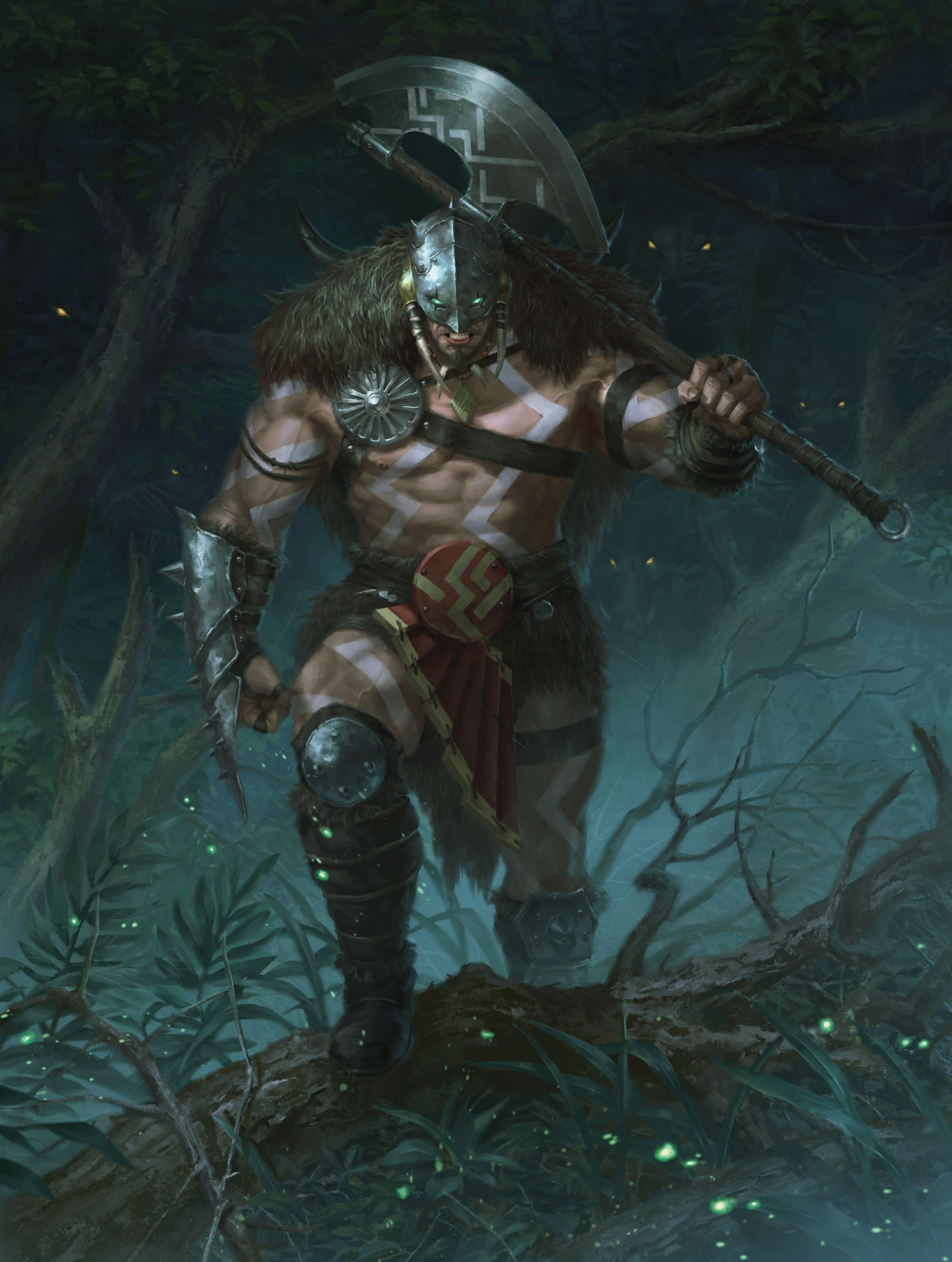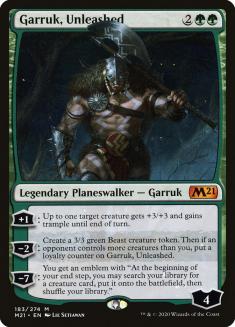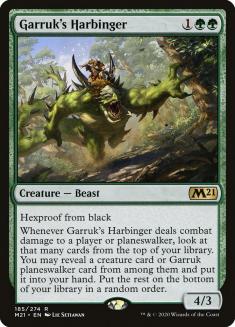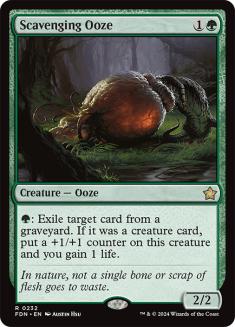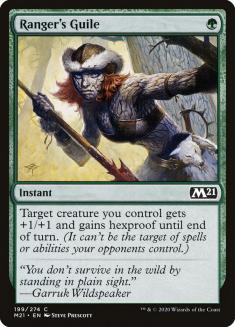Aggro decks have had a tough go of it in Standard as of late. The big mana strategies are fast and powerful enough that it’s hard to get underneath them, and the midrange and control decks have great interaction like Shatter the Sky, The Birth of Meletis, and Mayhem Devil. There was a brief time when Lurrus of the Dream-Den decks looked like they’d let low-curve aggro decks compete, and Obosh, the Preypiercer led to some powerful draws before the companion errata, but for the most part it’s been a haymaker world since Throne of Eldraine was released last fall.
Notably, the aggro decks that have performed well have been all-in with a very low curve and some sort of haymaker that can end the game on the spot. Obosh; Torbran, Thane of Red Fell; and Embercleave have all played this role at various times, but they all did the same thing — make sure the game is over because my opponent’s end-game is stronger than mine.
The problem with this approach is that it’s entirely one-note. If your opponent knows what’s coming, they can find the tools to handle such a linear strategy and play around your haymaker enough of the time to make it a favorable matchup. As such, aggro decks have typically succeeded when they’ve taken the metagame by surprise.
In order to become a consistent contender, aggro decks need to become better-rounded. This is tough in a world with Temur Reclamation around because that deck goes so far over the top that you need to be primarily concerned with your goldfish. Then you need to have interaction for other creature decks, which leaves little space to maneuver against interactive strategies like Azorius Control.
The key to breaking out of this squeeze is to have threats that can pull double duty, playing well when you’re racing the big mana decks as well as when your opponents are more interactive. That’s where Garruk, Unleashed and Garruk’s Harbinger come in.
Both of these cards are able to serve the dual purpose described above, and do so at an efficient rate. With Garruk’s Harbinger, you have a creature that generates card advantage without sacrificing its damage output. In fact, to generate that advantage you need to be attacking, though notably there’s no tension as to whether or not you want to attack your opponent or a planeswalker, since it triggers either way.
Garruk’s Harbinger’s major weakness is to Scorching Dragonfire, which is among the most popular removal spells in Ikoria Standard right now, but with Eliminate set to enter Core Set 2021 Standard, we should see a shift in the balance of power. Eliminate answers Uro, Titan of Nature’s Wrath; Gemrazer; and Basri Ket more reliably than Scorching Dragonfire, but doesn’t touch Harbinger.
[+1}: Up to one target creature gets +3/+3 and gains trample until end of turn.
Garruk, Unleashed plays double duty with its first two abilities. His +1 ability lets you race effectively, turning it into a three-power haste creature at the very least. It can be easy to underestimate that ability based on that comparison, because four mana for a 3/3 with haste wouldn’t even turn heads in Limited in 2020, but it often does much more than that. Against any chump blocker, it can get your biggest creature through for a big chunk of damage because it comes with trample. And against larger blockers it can get one of your smaller creatures into the red zone when it otherwise would be forced to stay back. That effectively turns Garruk into a 4/4 or larger creature with haste — much more impressive, considering we still haven’t considered the other two-thirds of the card.
[-2]: Create a 3/3 Beast creature token. Then if an opponent controls more creatures than you, put a loyalty counter on Garruk, Unleashed.
The -2 ability creates a 3/3 Beast token, which for four mana once again is unimpressive in isolation. But it’s exactly what you want if your opponent has interacted with your first couple of threats because that Beast is either attacking for six next turn or finding a buddy. That last clause of adding an extra loyalty won’t come up often, but when it does it’ll be very important because it will help protect your Garruk or allow it to soak up an extra attacker. It doesn’t move the needle much in evaluating the card, but Magic is a game of small edges.
Contrast that with Vivien, Arkbow Ranger, which reads similarly. Its -3 provides creature removal that isn’t necessary in the current Standard metagame, and the inability to create a threat by itself makes it much easier to ignore. It’s similarly powerful to Garruk, Unleashed, but doesn’t provide the effects that aggro decks need to compete right now. And though Core Set 2021 is set to make some changes, it’s unlikely that the eighth set upsets the fundamental dynamic of the format.
The first home for this dynamic duo is the most recent entrant into the Standard metagame: Mono-Green Aggro. Variants that were lower-curved and more all-in with Gingerbrute and various pump spells arrived first and have given way to more resilient forms from the first of the two Players Tours last weekend. Both of these supplement that deck beautifully, representing a significant jump in every aspect.
Creatures (29)
- 3 Scavenging Ooze
- 4 Pelt Collector
- 4 Barkhide Troll
- 3 Questing Beast
- 2 Wildborn Preserver
- 4 Stonecoil Serpent
- 2 Yorvo, Lord of Garenbrig
- 3 Gemrazer
- 4 Garruk's Harbinger
Planeswalkers (3)
Lands (23)
Spells (5)
Sideboard

The numbers here are a rough cut, but that’s a good problem to have, because it means there are more than enough good options to fill out the deck. I’ve opted to trim on Wildborn Preserver and Yorvo, Lord of Garenbrig from where the lists have been built in order to make room for new options. Both Preserver and Yorvo are weak in multiples — Yorvo because it’s legendary, and Preserver because multiple copies compete for the same mana when they trigger.
Yorvo made room for Garruk’s Harbinger and Garruk himself, raising the curve just slightly. Trimming Preserver made room for another new addition to Standard: Scavenging Ooze. No one doubts the power of Scavenging Ooze, and it looks great in the current Standard with plenty of decks using their graveyard but none going all-in, which makes traditional hate cards like Grafdigger’s Cage and Soul-Guide Lantern awkward. Scavenging Ooze takes care of Uro and Cauldron Familiar while being a more than serviceable aggressive creature.
The last new addition here is Ranger’s Guile, which helps compensate for the slightly increased curve but also leads to huge tempo gains that can end the game on the spot. In particular, it makes Elspeth Conquers Death look embarrassing and punishes anyone who tries to wait until you pump a creature with Garruk before using their removal spell.
I opted for Ram Through over a pump spell because I think this list can effectively race big mana strategies with the Garruks, especially those which are building toward Ugin, the Spirit Dragon. Ram Through also plays very well with Garruk, either letting you take down a larger blocker or effectively turning the Garruk activation into six extra damage instead of three if you target a smaller one.
With these upgrades, Mono-Green Aggro is just as explosive as it has been, but now has much more staying power. The Garruk duo keep the gas flowing so you can reload once your first wave of threats is answered, and Scavenging Ooze and Stonecoil Serpent scale into the late-game so your cards can hold their own on a one-for-one basis even with a lower curve.
Beyond Mono-Green Aggro, I’m also interested in playing Garruk, Unleashed with Embercleave. His +1 ability sets up Embercleave beautifully and should lead to a lot of Turn 5 kills, even if your first threat or two are removed. And much like Mono-Green Aggro, Gruul gets plenty of new tools from Core Set 2021:
Creatures (26)
- 3 Scavenging Ooze
- 4 Pelt Collector
- 1 Zhur-Taa Goblin
- 4 Paradise Druid
- 3 Questing Beast
- 4 Garruk's Harbinger
- 4 Terror of the Peaks
- 3 Radha, Heart of Keld
Planeswalkers (3)
Lands (24)
Spells (7)

This deck is going a bit bigger than Mono-Green, so Paradise Druid makes its way into the deck for acceleration. It also plays a key role as a mana fixer because this deck doesn’t want to play Temple of Abandon and interfere with its ability to curve out. The higher curve is also mitigated by Radha, Heart of Keld, which ensures you make your land drops on time. Radha is competing here with Gruul Spellbreaker, which plays well with the various pump effects, so if Radha underperforms there’s a proven replacement waiting to make its way back in.
The other new addition is Terror of the Peaks. It’s not a card I’m particularly excited about, because there isn’t any immediate impact, but this deck utilizes it quite well. The additional three life is helpful in a deck looking for reach, but the important synergy is with Garruk. Untapping on Turn 5 with a Garruk on the battlefield lets you create a 3/3 after casting Terror of the Peaks and get an immediate Lightning Bolt that can take down a pesky creature or planeswalker, or go upstairs to make the Terror tax even more painful.
Also, Garruk’s Harbinger ensures you have a steady stream of creatures to cast after Terror of the Peaks so it quickly takes over the game. With how powerful its ability is, you will almost assuredly win every time you untap with Terror of the Peaks. That makes it worth considering despite the weakness to Teferi, Time Raveler and Elspeth Conquers Death.
The biggest gain for Gruul over Mono-Green is of course Embercleave. I noted earlier how powerful it is in combination with the pump ability of Garruk, but it has a proven track record by itself, so now Gruul has two great closers. Embercleave is of course awkward in multiples and requires a large creature on the battlefield, so with Garruk you can afford to trim to three copies. The reach from these cards also makes the Terror of the Peaks tax harder to pay, so Gruul has a ton of reach despite not playing any burn spells.
Oftentimes aggro decks have a hard time balancing reach, resilience, and interaction while maintaining a high threat density. But when you attack those things to efficient threats, it gets a lot easier to cover all your bases. Gruul accomplishes this better than Mono-Green, but does so at the cost of some efficiency by adding a second color.
Looking Forward
Garruk isn’t flashy in what it does. Sometimes it’s a pump spell, sometimes it pumps out creature tokens. But it does exactly what aggro decks in Standard need right now to break out of the low-curve, linear formula they’ve been forced into by the power of control and big mana. It makes blocking with 0/4 Wall and Shark tokens more difficult, and if players move to more spot removal, you can respond with more copies of Ranger’s Guile and/or Gruul Spellbreaker.
There are only three months more of this Standard environment, but I think we’ve finally reached a point where aggro decks have enough tools to contend in the metagame by making astute adjustments from week to week. Versatility is the name of the game and all the most successful decks in Standard have it.
Temur Reclamation can play a ramp-style game and go over the top with Explosion or tempo you out with counterspells, Nightpack Ambusher, and Brazen Borrower. Bant Control has a similar dichotomy with a fully fleshed-out ramp and control gameplan it can execute.
When red aggro decks were dominant in Standard a few years ago, it wasn’t just the great curves into Hazoret the Fervent that won games, but the ability to win longer games with Hazoret; Chandra, Torch of Defiance; Bomat Courier; etc. Garruk, Unleashed and Garruk’s Harbinger bring that same versatility to green aggro decks. The only question is how best to fill out the rest of the deck and how the rest of the metagame will react, so you can stay one step ahead.

